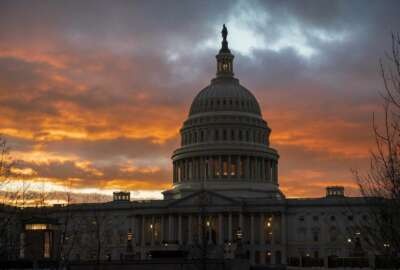
Trump signs continuing resolution, averting government shutdown until Nov. 21
President Donald Trump Friday evening signed the seven-week continuing resolution into law, delaying fears of another government shutdown until Nov. 21.
President Donald Trump Friday evening signed a seven-week continuing resolution into law, delaying the possibility of another government shutdown until Nov. 21.
The Senate passed the CR Thursday with bipartisan support and a 82-15 vote. The House cleared the bill last week. The president had to take action by Monday, Sept. 30, the fiscal year deadline.
The CR would fund agencies at 2019 levels through Nov. 21, buying lawmakers more time to negotiate over several full-year appropriations bills. The House overwhelmingly cleared the bill last week.
Notably, the CR includes an additional $48 million for the Office of Personnel Management, which faces a funding shortfall on Oct. 1 when the National Background Investigations Bureau and the governmentwide security clearance portfolio transfers to the Pentagon.
The Trump administration has said the security clearance transfer will create a $70 million gap for OPM, which relied on the revenue it received by processing background investigations and other security credentials to fund other entities within the agency.
In addition, the CR gives OPM the authority to transfer roughly $29.7 million from “appropriate trust funds … without regard to any other provision of law” to maintain agency operations.
OPM administers health and retirement benefits to more than 2.7 million active employees and nearly 2.6 million annuitants, survivors and their family members through the Earned Benefits Trust Funds, which have close to $1 trillion in combined assets.
Former OPM officials, as well as Margaret Weichert, former acting OPM director and Office of Management and Budget deputy director for Management, have long questioned whether the agency could tap a greater portion of those trust funds to support the agency’s operations. This continuing resolution would allow OPM to do that up to a point.
The CR doesn’t address federal pay, because the measure simply keeps agency funding consistent with 2019 levels. House and Senate leadership must conference over exactly how much of a raise civilian federal employees would receive in 2020 — either the House-passed 3.1% raise or the president’s proposed 2.6% bump.
Most federal pay raises kick in on or near Jan. 1 of the next year.
Meanwhile, Senate appropriators this week are continuing to make their way through a series of appropriations bills. The Appropriations Committee has cleared 10 of 12 appropriations, though none of them have made it to the Senate floor for a vote.
“As we close out this month, we must acknowledge the progress we have made, while also recognizing that we still have a long way to go in fulfilling our duty to fund the government,” Senate Appropriations Committee Chairman Richard Shelby (R-Ala.) said Thursday. “Ultimately, the factors determining our success in fulfilling that obligation will have to be decided through bicameral, bipartisan negotiations — not by the Senate alone. I believe we must find a way to work together to produce the outcome the American people expect of us — what they deserve from us, which is to fund the government in a deliberate and bipartisan manner. I encourage my colleagues on both sides to set aside partisan politics so we can get the job done sooner rather than later.”
The full House has already passed 10 of 12 appropriations bills.
Copyright © 2025 Federal News Network. All rights reserved. This website is not intended for users located within the European Economic Area.
Nicole Ogrysko is a reporter for Federal News Network focusing on the federal workforce and federal pay and benefits.
Follow @nogryskoWFED






